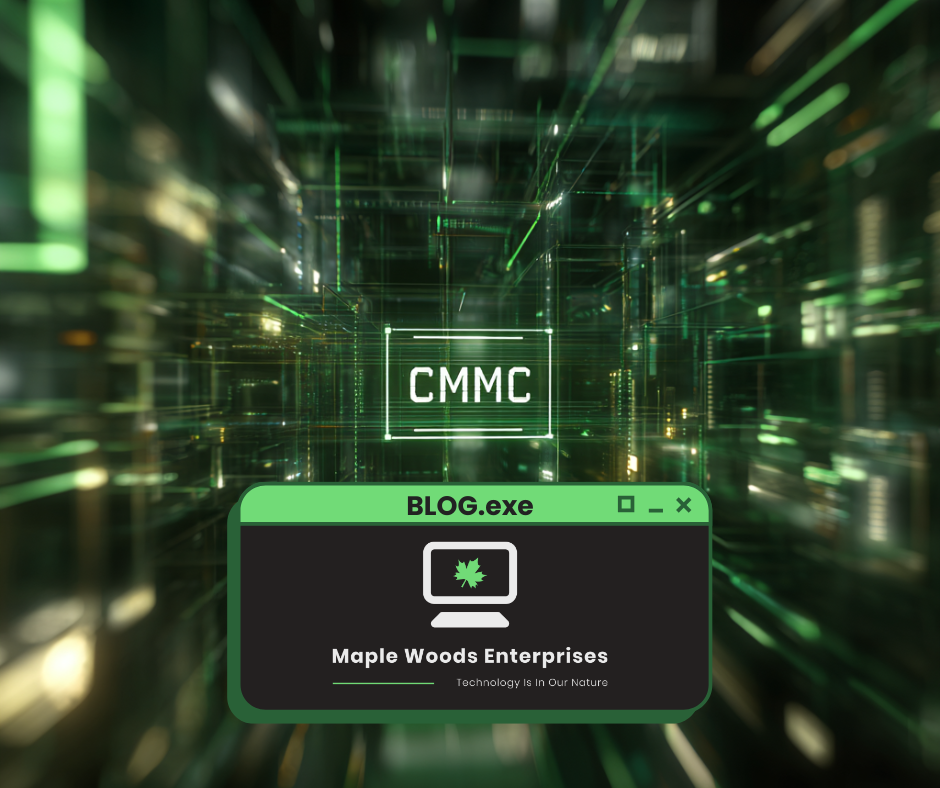CMMC Compliant: Essential DoD Requirements You Must Know in 2025
- maplewoods

- Jun 23
- 8 min read

CMMC compliance has become mandatory for DoD contractors, and the costs can range from $25,000 to over $100,000 for small defense contractors who want Level 2 certification. The Cybersecurity Maturity Model Certification (CMMC) program rule, published on October 15, 2024, requires every contractor to comply if they handle Controlled Unclassified Information (CUI) or Federal Contract Information. Working with the DoD now requires this certification.
CMMC compliance serves a specific purpose. CMMC 2.0 protects sensitive unclassified information that the DoD shares with contractors and subcontractors. The framework has three distinct levels. Level 1 needs 17 basic security practices. Level 2 requires 110 controls based on NIST SP 800-171. Level 3 adds stricter measures. Prime contractors and their subcontractors must achieve certification levels specified in their contracts.
DoD's CMMC requirements focus on cybersecurity maturity. Contracts above $15,000 that involve CUI need Level 2 certification. The Final Rule took effect on December 26, 2024, and assessments began January 31, 2025. Full implementation is expected by October 31, 2026, but some contractors already demand compliance and it could take as long as early 2028. Knowing how to achieve CMMC compliance is vital to win DoD contracts.
This piece breaks down CMMC compliance requirements for 2025. You'll learn about certification levels, assessment processes, and implementation timelines that matter to your business.
Understanding CMMC 2.0 and Its DoD Mandate

The Department of Defense has transformed its approach to contractor cybersecurity requirements through the Cybersecurity Maturity Model Certification (CMMC). This new system replaces previous self-attestation models. The DoD now gets concrete proof that contractors protect sensitive information properly.
What is CMMC compliance and why it matters in 2025
The Defense Industrial Base (DIB) uses CMMC as a unified security framework to protect Federal Contract Information (FCI) and Controlled Unclassified Information (CUI). This program impacts roughly 200,000-300,000 contractors. More than 80,000 contractors will need Level 2 certification because they handle CUI. Assessments should start by March/April 2025, and everyone must comply by 2026.
The DoD created this program to ensure defense contractors and subcontractors meet information protection requirements. They must protect sensitive unclassified information based on cybersecurity threat risks. CMMC only applies to unclassified networks that handle FCI or CUI.
CMMC 2.0 vs original CMMC: Key differences
The 2020 CMMC framework had five maturity levels. CMMC 2.0 simplified this to three levels. The DoD made these changes after industry feedback to:
Make it cheaper for small businesses
Build more trust in assessments
Match requirements with existing federal standards
Level 2 (previously Level 3) now needs 110 controls from NIST SP 800-171, down from 130 in the original version. CMMC 2.0 also lets Level 1 contractors do yearly self-assessments. Some Level 2 contractors may be eligible for self-assessments if they don’t handle prioritized CUI, but most will require a C3PAO assessment.
DoD enforcement through DFARS 252.204-7012 and 32 CFR Part 170
The DoD uses two main ways to enforce CMMC requirements. DFARS clause 252.204-7012 requires contractors to provide adequate security for covered information systems. The CMMC Program becomes official through 32 CFR Part 170, which details contractor cybersecurity standards.
CMMC will show up in DoD solicitations after the revised DFARS 252.204-7021 takes effect. The implementation happens in four stages. This gives contractors time to adapt while keeping defense information safe.
Breakdown of CMMC Compliance Levels and Requirements

CMMC 2.0 has three compliance levels with stricter cybersecurity requirements for defense contractors. Each level targets specific information types that need different assessment approaches.
Level 1: 15 FAR-based controls and annual self-assessment
Level 1 protects Federal Contract Information (FCI) through simple cyber hygiene practices. Organizations must implement 17 security controls from FAR clause 52.204-21. The annual self-assessments don't allow Plan of Action and Milestones (POA&Ms). Every control needs a "MET" score to achieve compliance.
Level 2: 110 NIST SP 800-171 controls and assessment options
Level 2 protects Controlled Unclassified Information (CUI) using 110 security requirements from NIST SP 800-171 Rev 2. Assessment requirements vary based on information criticality. Critical CUI handlers need C3PAO assessments every three years. Non-critical CUI handlers can perform annual self-assessments. A minimum SPRS score of 88/110 is needed with POA&Ms submissions.
Level 3: 110 NIST SP 800-171 + 24 NIST SP 800-172 controls
Level 3 enhances Level 2 requirements to protect against Advanced Persistent Threats (APTs). Contractors must achieve Final Level 2 status before moving to Level 3. The certification requires implementation of 24 selected controls from NIST SP 800-172.
Assessment types: Self, C3PAO, and DIBCAC
CMMC levels use three assessment methods:
Self-assessment: Organizations assess their own compliance (Level 1 and some Level 2)
C3PAO assessment: Third-party evaluations for Level 2 certification
DIBCAC assessment: Government-led evaluations exclusively for Level 3 certification
Assessment results stay valid for three years, except for annual self-assessments.
Affirmation and SPRS submission requirements
The Supplier Performance Risk System (SPRS) needs electronic affirmation for all levels. An "Affirming Official" must submit attestations:
After achieving conditional or final CMMC status
Annually following certification
After POA&M closeout assessments
Contractors become ineligible for DoD contracts requiring CMMC compliance if they miss annual affirmation deadlines.
Plan of Action and Milestones (POA&M) and Remediation Rules
Defense contractors need to understand the Plan of Action and Milestones (POA&M) system to get CMMC certification. This formal remediation mechanism helps organizations receive conditional certification as they work on fixing specific cybersecurity gaps.
POA&M eligibility by level and assessment type
Level 1 assessments don't allow POA&Ms at all. Level 2 contractors can use POA&Ms under strict rules. They must score at least 80% (88 out of 110 points) to qualify for a Conditional Level 2 status with POA&Ms.
Level 2 contractors can put off implementing some non-critical controls that are worth 1 point in SPRS. The rules are similar for Level 3 certification - contractors need to score at least 80% of the total security requirements. This gives them time to put challenging controls in place.
180-day closeout window and reassessment process
Organizations with Conditional CMMC Status have 180 days to fix all POA&M items. The clock starts ticking when they submit their assessment results to SPRS or CMMC eMASS.
A formal closeout assessment checks if they've fixed all the issues properly. The assessment matches their original evaluation - self-assessments for Level 2 (Self), C3PAO assessments for Level 2 (C3PAO), and DIBCAC assessments for Level 3. Contractors who don't fix everything within 180 days lose their Conditional Status and can't bid on DoD contracts that need CMMC.
Critical controls that cannot be deferred
Some cybersecurity controls must be fully in place before getting even conditional CMMC certification. These non-deferrable controls include:
Access control measures for external connections and public information (AC.L2-3.1.20, AC.L2-3.1.22)
Physical security requirements like visitor escorts and access logs (PE.L2-3.10.3, PE.L2-3.10.4, PE.L2-3.10.5)
System Security Plan documentation (CA.L2-3.12.4)
Level 3 requirements related to threat response capabilities
Multi-factor authentication, encryption, and incident response capabilities are also critical controls that can't go into POA&Ms. The CMMC rule lets SC.L2-3.13.11 (CUI Encryption) be part of a POA&M only if encryption is used but isn't FIPS-validated[173].
CMMC Implementation Timeline and Contractual Impact
The Department of Defense has created a strategic four-phase plan to roll out CMMC implementation. This approach gives contractors enough time to prepare. A clear understanding of this timeline is a vital part of staying eligible for future DoD contracts.
Phased rollout from 2025 to 2028
The DoD implementation timeline spans approximately three years through four distinct phases:
Phase 1 launched in early 2025 after the 48 CFR CMMC acquisition rule is finalized. New DoD solicitations will require CMMC Level 1 and Level 2 self-assessments before contract awards.
Phase 2 starts in mid-2026. The DoD will require third-party CMMC Level 2 certification for applicable contracts. The DoD estimates 8,350 medium and large entities must meet C3PAO assessment requirements during this phase.
Phase 3 kicks off around mid-2027. This phase introduces CMMC Level 3 requirements and extends Level 2 certification requirements to existing contracts.
Phase 4 completes the full implementation 36 months after Phase 1 begins.
CMMC requirements in DoD contracts
The revised DFARS clause 252.204-7021 will implement CMMC requirements contractually. The DoD can include CMMC requirements on contracts awarded before the 48 CFR rule takes effect through bilateral contract modification after negotiations.
Contracting officers will not award contracts, exercise options, or extend performance periods if offerors fail to show passing results from current certification assessments once Phase 1 begins.
Flow-down requirements for subcontractors
Prime contractors need to verify appropriate CMMC certification for all subcontractors based on their information handling sensitivity. Subcontractors may qualify for a lower CMMC level if the prime contractor shares limited information.
Prime contractors are responsible for their subcontractors' compliance. Flow-down means primes must pass cybersecurity requirements to every subcontractor receiving FCI or CUI. This typically happens by copying DFARS clauses into each subcontract.
Conclusion
CMMC compliance has become a crucial requirement for anyone working with the Department of Defense, as we've seen throughout this piece. The three-tiered framework represents the most important transformation from previous self-attestation models to a more rigorous verification system. This is a big deal as it means that costs can reach $100,000 for small businesses seeking Level 2 certification.
Contractors have some breathing room with the phased rollout starting in early 2025, though waiting until the last minute would be unwise. The first assessments will likely begin by March/April 2025, making early preparation crucial. Your immediate priority should be understanding your specific requirements—whether the 15 simple controls of Level 1 or the detailed 110 controls of Level 2.
Prime contractors need to focus on the flow-down requirements. Your subcontractors must achieve appropriate certification based on the information they handle. The prime contractor's responsibility includes ensuring this compliance.
The POA&M system offers some flexibility for organizations worried about meeting all requirements right away—except at Level 1, where all controls must receive a "MET" score. Contractors pursuing Level 2 or 3 certification can implement critical controls first and develop plans to address remaining gaps within the 180-day window.
The Defense Industrial Base faces unprecedented cybersecurity challenges. CMMC provides a clear framework to protect sensitive information. Maple Woods Enterprises can help your organization become CMMC compliant with tailored solutions for defense contractors of all sizes if you need help navigating these complex requirements.
CMMC compliance will determine which companies can compete for DoD contracts soon. Breaking down the process into manageable steps creates a clear path forward—understanding your level, identifying gaps, implementing controls, and preparing for assessment. Contractors who take action now will gain a competitive advantage when CMMC requirements appear in contracts starting in 2025.
FAQs
Q1. Is CMMC compliance mandatory for all DoD contractors?
Yes, CMMC compliance is becoming mandatory for DoD contractors. The program is being implemented in phases, starting with high-priority contracts and expanding to all contracts. By 2025, DoD contracts will include CMMC compliance as a condition for contract awards, with full implementation expected by 2027.
Q2. How does CMMC 2.0 differ from the original CMMC framework?
CMMC 2.0 streamlines the original framework by reducing the number of levels from five to three. It also aligns more closely with existing federal standards, reduces costs (especially for small businesses), and allows for some self-assessments at lower levels. Level 2 now requires 110 controls based on NIST SP 800-171, down from 130 in the original framework.
Q3. What are the three levels of CMMC compliance?
Level 1 requires 15 basic FAR-based controls and annual self-assessment. Level 2 mandates 110 NIST SP 800-171 controls with various assessment options. Level 3 builds on Level 2 by adding 24 NIST SP 800-172 controls for protection against advanced persistent threats. Each level targets specific types of information and has different assessment requirements.
Q4. How long do contractors have to address issues identified in a Plan of Action and Milestones (POA&M)?
Contractors granted Conditional CMMC Status have a strict 180-day window to address all POA&M items. This period begins when assessment results are finalized and submitted. Failure to complete remediation within this timeframe results in the expiration of Conditional Status, making contractors ineligible for DoD contracts requiring CMMC.
Q5. Are prime contractors responsible for their subcontractors' CMMC compliance?
Yes, prime contractors are responsible for ensuring their subcontractors possess appropriate CMMC certification based on the sensitivity of information they'll handle. This requirement flows down through the supply chain, with prime contractors obligated to pass cybersecurity requirements to every subcontractor receiving Federal Contract Information (FCI) or Controlled Unclassified Information (CUI)




Comments